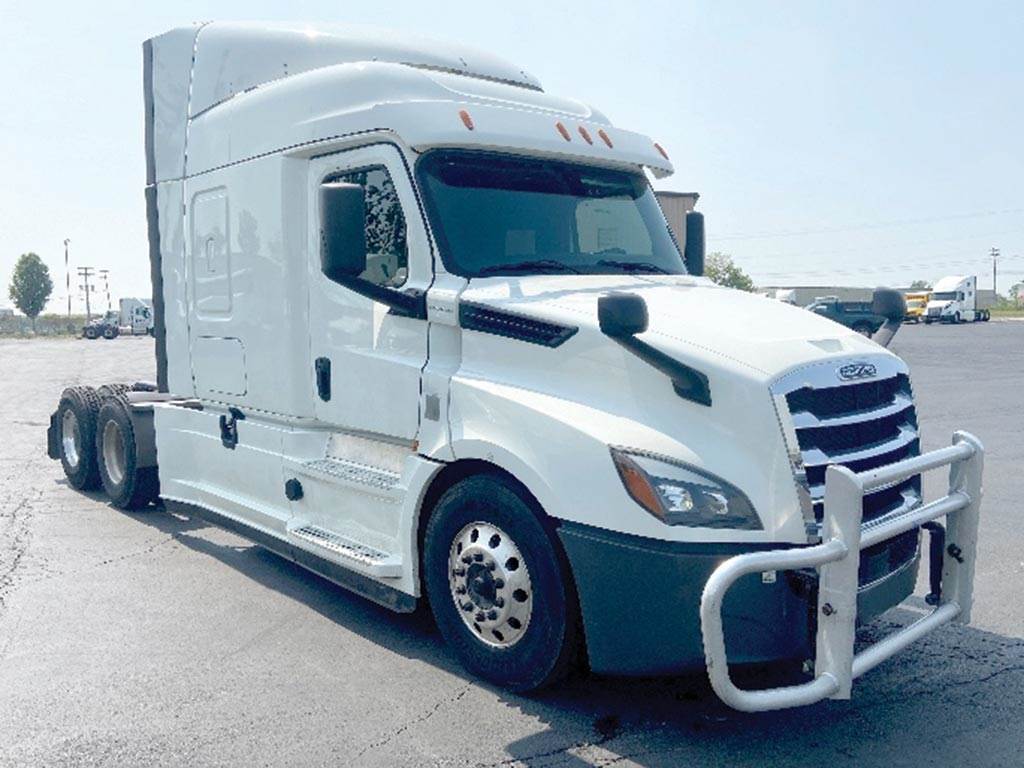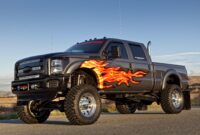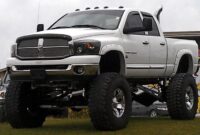Mid Roof Semi Trucks For Sale: Your Comprehensive Guide to Balancing Versatility and Value sale.truckstrend.com
In the vast landscape of commercial trucking, selecting the right semi-truck is a pivotal decision that impacts everything from operational efficiency and driver comfort to overall profitability. Among the myriad options available, the mid-roof semi truck stands out as a compelling choice, offering a unique blend of practicality, versatility, and cost-effectiveness. Often described as the sweet spot between the towering high-roof sleeper and the compact day cab or flat-top, mid-roof semi trucks provide sufficient space and amenities for drivers without the excessive height that can limit certain operations or incur higher fuel costs.
This comprehensive guide delves into the world of mid-roof semi trucks for sale, exploring what makes them a preferred option for many trucking businesses and owner-operators. We’ll cover their distinct advantages, crucial considerations for purchase, where to find the best deals, and practical advice to ensure your investment drives success.
Mid Roof Semi Trucks For Sale: Your Comprehensive Guide to Balancing Versatility and Value
What Defines a Mid-Roof Semi Truck?
A mid-roof semi truck is characterized by its sleeper cabin’s interior height, which typically ranges from around 60 to 70 inches (approximately 5 to 5.8 feet). This design allows for a comfortable bunk area, ample storage, and often enough room for a small table or basic amenities, but usually not full stand-up height throughout the entire sleeper.
Key distinctions from other configurations:
- High-Roof (Condo) Sleepers: These offer full stand-up height (over 80 inches) throughout the cabin, providing maximum living space, often with larger bunks, full kitchens, and entertainment centers. They are ideal for long-haul drivers who practically live in their trucks.
- Low-Roof (Flat-Top) Sleepers/Day Cabs: Low-roof sleepers offer minimal height, often just enough for a bunk, and are less common today. Day cabs have no sleeper at all, designed for local or regional routes where the driver returns home daily.
Mid-roof trucks strike a balance, providing a comfortable resting and living environment without the increased aerodynamic drag or clearance issues associated with taller high-roof models. Their exterior height is also lower, making them suitable for a broader range of applications.

The Unique Advantages of Choosing a Mid-Roof Semi Truck
The popularity of mid-roof semi trucks isn’t coincidental; it stems from a host of practical benefits that cater to specific operational needs and financial goals.
-
Versatility Across Trailer Types: One of the most significant advantages of a mid-roof truck is its adaptability. Its reduced height makes it ideal for pulling a wider variety of trailers, particularly those with height restrictions or requiring overhead clearance. This includes:

- Flatbeds: Where the load often extends above the fifth wheel.
- Step Decks: Similar to flatbeds but with a drop in deck height.
- Car Haulers: Which often have multiple levels and specific clearance requirements.
- Some Dry Vans and Reefers: Especially when navigating older industrial areas with low bridges or tight loading docks.

This versatility can open up more freight opportunities for owner-operators and businesses.
-
Improved Aerodynamics and Fuel Efficiency: Compared to their high-roof counterparts, mid-roof trucks present a smaller frontal area and often have a more streamlined profile when paired with certain trailers. This translates to reduced aerodynamic drag, which directly impacts fuel consumption. While the difference might seem marginal per mile, over thousands of miles, it can lead to substantial savings in fuel costs – a major operating expense for any trucking business.
-
Enhanced Maneuverability and Clearance: The lower overall height of a mid-roof truck provides greater flexibility when navigating areas with overhead obstructions. This includes:
- Low Bridges and Underpasses: Common in older cities or rural routes.
- Loading Docks and Warehouses: Where overhead doors or ceilings might be lower.
- Construction Sites: With temporary structures or overhead utility lines.
This improved clearance reduces the risk of costly damage and expands the range of accessible delivery points.
-
Cost-Effectiveness: Generally, mid-roof semi trucks come with a lower purchase price than comparable high-roof models. This initial saving can be significant. Furthermore, their better fuel efficiency contributes to lower long-term operating costs. Insurance premiums might also be slightly lower due to the reduced risk profile in certain scenarios.
-
Sufficient Driver Comfort and Amenities: While not offering the expansive living space of a condo sleeper, a mid-roof provides more than enough comfort for most regional and many over-the-road drivers. They typically feature:
- A comfortable bunk for restful sleep.
- Adequate storage for personal belongings and gear.
- Space for a small refrigerator, microwave, and other essential amenities.
- Heating and air conditioning systems for climate control.
This balance ensures drivers can rest effectively, maintaining alertness and productivity, without the unnecessary bulk or expense of a full-height sleeper if their routes don’t demand it.
Key Considerations When Buying a Mid-Roof Semi Truck
Purchasing a semi-truck is a substantial investment, and a mid-roof is no exception. Careful consideration of several factors will ensure you select a truck that perfectly aligns with your operational needs and budget.
-
Intended Use and Route Profile: Before anything else, define your primary use. Will you be hauling specific types of freight (e.g., car transport, flatbed loads)? What are your typical routes – long-haul, regional, or a mix? This will influence the required engine power, transmission type, and sleeper amenities. A regional driver might prioritize fuel efficiency and maneuverability, while a driver occasionally staying out for weeks might need more robust sleeper features.
-
Engine and Transmission Specifications: The heart of your truck dictates its performance and efficiency.
- Horsepower (HP) & Torque: Match these to the typical weight of your loads and the terrain you’ll be traversing. Higher HP/torque is needed for heavy loads and mountainous regions.
- Fuel Efficiency: Research engine models known for good fuel economy.
- Manual vs. Automatic (AMT): Automated Manual Transmissions (AMTs) are increasingly popular for their ease of use and fuel efficiency, especially for new drivers. Manual transmissions offer more control for experienced drivers but require more skill.
-
Sleeper Amenities and Interior Layout: Even within the mid-roof category, sleeper configurations vary. Consider:
- Bunk Size: Single or double bunk options.
- Storage Space: Cabinets, closets, under-bunk storage.
- Power Outlets: For electronics, appliances.
- APU (Auxiliary Power Unit) / Inverter: For climate control and power when the engine is off, saving fuel and reducing idle time.
- Refrigerator/Microwave Space: Essential for long hauls.
-
Maintenance History and Pre-Purchase Inspection (for Used Trucks): For used mid-roof trucks, a thorough investigation is paramount.
- VIN Check: Obtain a detailed vehicle history report (e.g., through Carfax for commercial vehicles, or other industry-specific services).
- Maintenance Records: Request all available service logs. Look for consistent maintenance, major repairs, and recurring issues.
- Professional Inspection: Always invest in a comprehensive pre-purchase inspection by an independent, certified mechanic specializing in heavy-duty trucks. This can uncover hidden mechanical problems, frame damage, or other issues that could lead to costly repairs down the road.
-
Mileage and Age: These factors significantly influence a used truck’s price, expected lifespan, and potential for future maintenance. While lower mileage and newer trucks are generally more expensive, they often offer greater reliability and potentially longer service life before major overhauls. Balance this with your budget and desired longevity.
-
Budgeting Beyond the Purchase Price: Remember to account for all associated costs:
- Financing Costs: Interest rates, loan terms.
- Insurance: Commercial truck insurance can be substantial.
- Taxes and Registration Fees.
- Initial Maintenance/Repairs: Even a "good" used truck might need new tires, fluid changes, or minor repairs.
- Operating Costs: Fuel, regular maintenance, tolls, permits.
Where to Find Mid-Roof Semi Trucks For Sale
The market for semi trucks is robust, offering several avenues to find your ideal mid-roof model.
- Authorized Dealerships (New & Used): Major truck manufacturers (Freightliner, Kenworth, Peterbilt, Volvo, International, Mack) have extensive dealership networks. They offer new trucks with warranties and often have a selection of certified pre-owned trucks. Dealers can also assist with financing.
- Independent Used Truck Dealers: These specialize in pre-owned commercial vehicles and often have a wider variety of makes and models from different manufacturers. Prices might be more competitive, but diligence is key regarding inspection and warranty.
- Online Marketplaces: Websites like TruckPaper.com, CommercialTruckTrader.com, MyLittleSalesman.com, and RitchieSpecs.com are excellent resources for browsing thousands of listings from dealers and private sellers across the country. Filter by make, model, year, and specific features.
- Auctions: Both online and physical auctions (e.g., Ritchie Bros. Auctioneers, IronPlanet) can offer competitive pricing, but trucks are typically sold "as-is," making a prior inspection crucial if possible.
- Private Sellers: Buying directly from an owner-operator or small fleet can sometimes yield a better price, as there’s no dealer markup. However, this route requires more personal effort in due diligence, inspection, and paperwork.
Tips for a Successful Purchase
- Define Your Needs Clearly: Before you even start looking, list out your non-negotiables (engine type, sleeper size, budget range) and your "nice-to-haves."
- Research Thoroughly: Compare different makes and models, read reviews, and understand common issues for specific years or engines.
- Prioritize Inspection: Never skip a professional pre-purchase inspection, especially for used trucks. This is your best defense against unexpected costly repairs.
- Test Drive Extensively: Pay attention to engine performance, transmission shifts, brake feel, steering responsiveness, and any unusual noises or vibrations.
- Negotiate Confidently: Don’t be afraid to haggle on the price, especially for used trucks. Have comparable listings in hand to support your offer.
- Understand Financing Options: Explore various lenders (banks, credit unions, dealership financing, equipment leasing companies) to find the best interest rates and terms. Have your financial documents prepared.
- Review All Paperwork: Ensure the title is clear, there are no outstanding liens, and all sales agreements are accurate before signing.
Potential Challenges and Solutions
- Challenge: Finding the "Perfect" Truck: The market might not always have a truck that ticks every single box.
- Solution: Prioritize your needs. Be willing to compromise on minor features if the core components (engine, frame, sleeper size) are right.
- Challenge: Hidden Mechanical Issues: A truck might look good but have underlying problems.
- Solution: The professional pre-purchase inspection is your strongest tool here. Also, consider buying from reputable dealers who offer limited warranties.
- Challenge: Securing Financing: Especially for new businesses or those with less-than-perfect credit.
- Solution: Build a strong business plan, improve your credit score, gather all financial documentation, and explore multiple financing avenues, including government-backed loans for small businesses.
- Challenge: Market Fluctuations: Truck prices can rise and fall based on demand, economic conditions, and new truck production.
- Solution: Stay informed about market trends. Be prepared to act when a good deal arises, but don’t rush into a purchase.
Price Table: Estimated Costs for Mid-Roof Semi Trucks
The price of a mid-roof semi truck can vary widely based on its age, mileage, make, model, engine type, condition, and included features. The table below provides estimated ranges for both new and used mid-roof semi trucks. These figures are subject to change based on market conditions, location, and specific configurations.
| Feature/Category | New Mid-Roof Semi Truck (Estimated Range) | Used Mid-Roof Semi Truck (Estimated Range) | Key Factors Influencing Price |
|---|---|---|---|
| Truck Age | Current Model Year | 1-7+ years old | Newer trucks are more expensive; older trucks may require more immediate maintenance. |
| Price Range | $150,000 – $220,000+ | $40,000 – $150,000 | Make, model, engine, mileage, condition, specific features, warranty. |
| Engine Type | Cummins, Detroit, PACCAR, Volvo, Mack | Cummins, Detroit, PACCAR, Volvo, Mack | Horsepower, torque, fuel efficiency ratings, maintenance history (for used). |
| Transmission | Manual (10, 13, 18-speed), Automatic (AMT) | Manual (10, 13, 18-speed), Automatic (AMT) | AMT generally adds to cost, but offers ease of use and potential fuel savings. |
| Mileage (Used) | N/A | 100,000 – 600,000+ miles | Lower mileage significantly increases price; impacts remaining engine/drivetrain life. |
| Sleeper Size | Typically 48" – 70" (Mid-roof specific) | Typically 48" – 70" (Mid-roof specific) | Interior amenities, storage capacity, bunk configuration (single/double). |
| Key Features/Options | Aerodynamic packages, advanced safety systems, premium interiors, APUs, inverters, enhanced HVAC. | APUs, inverters, refrigeration, entertainment systems, custom storage, premium seating. | Advanced technology, comfort features, specialized equipment (e.g., wet kits). |
| Typical Brands | Freightliner, Kenworth, Peterbilt, Volvo, International, Mack | Freightliner, Kenworth, Peterbilt, Volvo, International, Mack | Brand reputation for reliability, parts availability, resale value. |
| Warranty | Manufacturer’s warranty (drivetrain, engine, etc.) | Limited dealer warranty, extended warranty options (often third-party). | Coverage period, covered components; crucial for peace of mind on used trucks. |
Note: These are general estimates. Prices can fluctuate significantly based on market demand, location, specific truck condition, and dealer promotions.
Frequently Asked Questions (FAQ) About Mid-Roof Semi Trucks
Q1: What is the typical interior height of a mid-roof sleeper?
A1: Mid-roof sleepers generally offer an interior height ranging from 60 to 70 inches (5 to 5.8 feet). This allows for comfortable seating and bunk space but typically not full stand-up height throughout the entire sleeper area.
Q2: Are mid-roof trucks good for Over-the-Road (OTR) operations?
A2: Yes, mid-roof trucks are very suitable for many OTR operations, especially regional hauls or routes where drivers are out for a few days to a week. They provide sufficient comfort and amenities for resting, without the larger footprint or higher fuel costs of a full high-roof condo sleeper.
Q3: How does fuel economy compare between mid-roof and high-roof trucks?
A3: Mid-roof trucks generally offer better fuel economy than high-roof trucks due to their smaller frontal area and improved aerodynamics. This difference can be significant over long distances, contributing to lower operating costs.
Q4: What kind of trailers are best suited for mid-roof trucks?
A4: Mid-roof trucks are highly versatile. They are particularly well-suited for flatbeds, step decks, car haulers, and specialized trailers that benefit from lower tractor height for clearance or loading. They also work effectively with standard dry vans and reefers.
Q5: What are the most common brands for mid-roof semi trucks?
A5: You’ll find mid-roof options from all major manufacturers, including Freightliner (e.g., Cascadia with mid-roof XT), Kenworth (e.g., T680, W900 with mid-roof options), Peterbilt (e.g., 579, 389 with mid-roof options), Volvo (e.g., VNL series), International (e.g., LT Series), and Mack (e.g., Anthem).
Q6: Should I buy a new or used mid-roof semi truck?
A6: The choice between new and used depends on your budget, risk tolerance, and business needs. New trucks offer the latest technology, full warranties, and no prior wear, but at a higher price. Used trucks are more affordable but require thorough inspection and may come with limited or no warranty. For many, a well-maintained used mid-roof truck offers excellent value.
Q7: What financing options are available for purchasing a mid-roof semi truck?
A7: Common financing options include traditional bank loans, dealership financing, equipment leasing, and specialized commercial vehicle lenders. Interest rates and terms will vary based on your creditworthiness, business history, and the age of the truck.
Q8: How important is a pre-purchase inspection for a used mid-roof truck?
A8: A pre-purchase inspection by an independent, certified heavy-duty mechanic is critically important for used trucks. It can uncover potential mechanical issues, structural damage, or deferred maintenance that could save you thousands of dollars in unexpected repairs after the purchase. Never skip this step.
Conclusion
The mid-roof semi truck represents a smart and adaptable choice in the competitive world of commercial trucking. By offering a compelling balance of driver comfort, operational versatility, fuel efficiency, and cost-effectiveness, it caters to a wide array of businesses and owner-operators. Whether you’re hauling specialized freight, navigating routes with clearance challenges, or simply seeking a more economical yet comfortable sleeper option, a mid-roof semi truck can be an invaluable asset to your fleet.
Making an informed purchase requires diligent research, thorough inspection, and a clear understanding of your specific needs and budget. By following the advice outlined in this guide, you can confidently navigate the market for mid-roof semi trucks for sale, ensuring your investment drives you towards sustained success on the open road.




